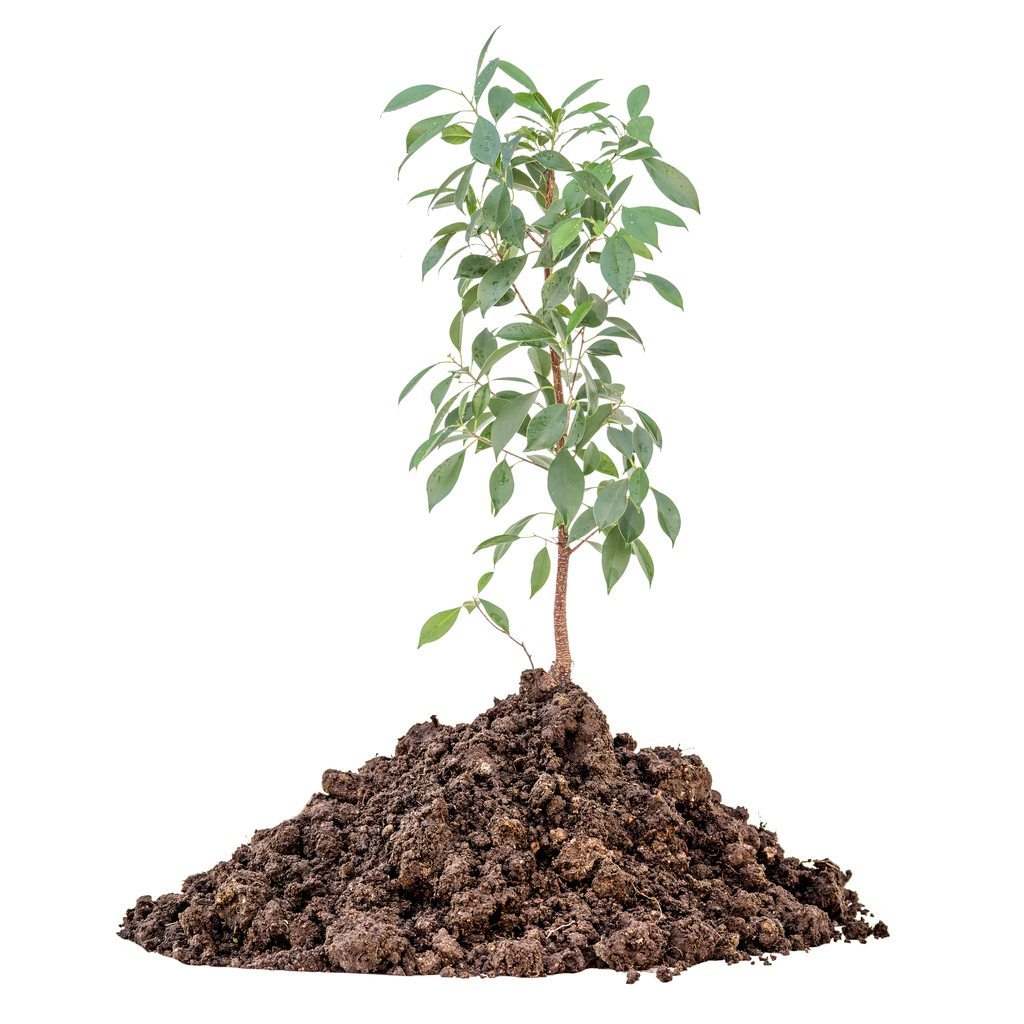When growing a container lemon tree, it might reach a time when it outgrows its pot or is its no longer getting enough sunlight, and transplanting a lemon tree is the next best step.
Perhaps where you place a lemon tree, mature vegetation and objects may be obstructing it.
Transplanting a lemon tree is a delicate task, so you need to be careful while doing it.
Remember that transplanting a lemon tree is tricky, so you need to know the right time of the year to move the plant.
You can do it once a year, and the best time to transplant it is during the spring.
Transplanting a lemon tree can take place to another bigger pot, or you can choose to put a lemon tree plant directly in the ground.
How to transplant a Lemon Tree
1. Prepare the tree for transplanting a lemon tree
When you are going to transplant a lemon tree, you need to remove it from the current pot and prune the old roots to stimulate new root growth as it grows in the new location.
2. Dig a trench for transplanting a lemon tree
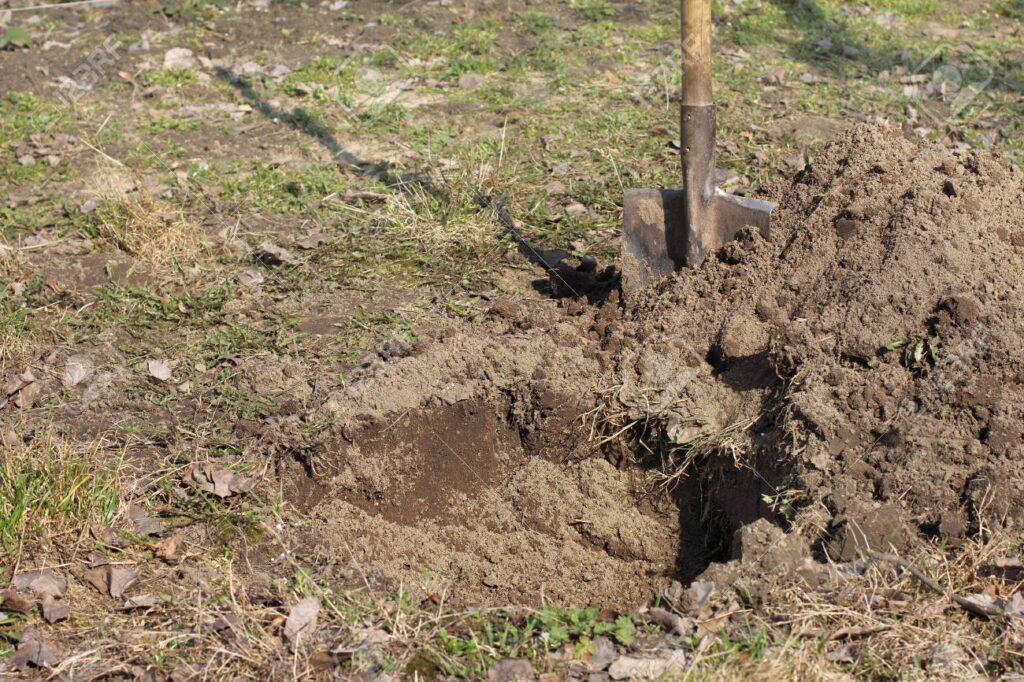
The next step after preparing the lemon tree is to dig a deep hole, and it should be half the distance from the trunk to the drip line (a foot across and 4 feet deep).
3. Clear the root system before transplanting a lemon tree
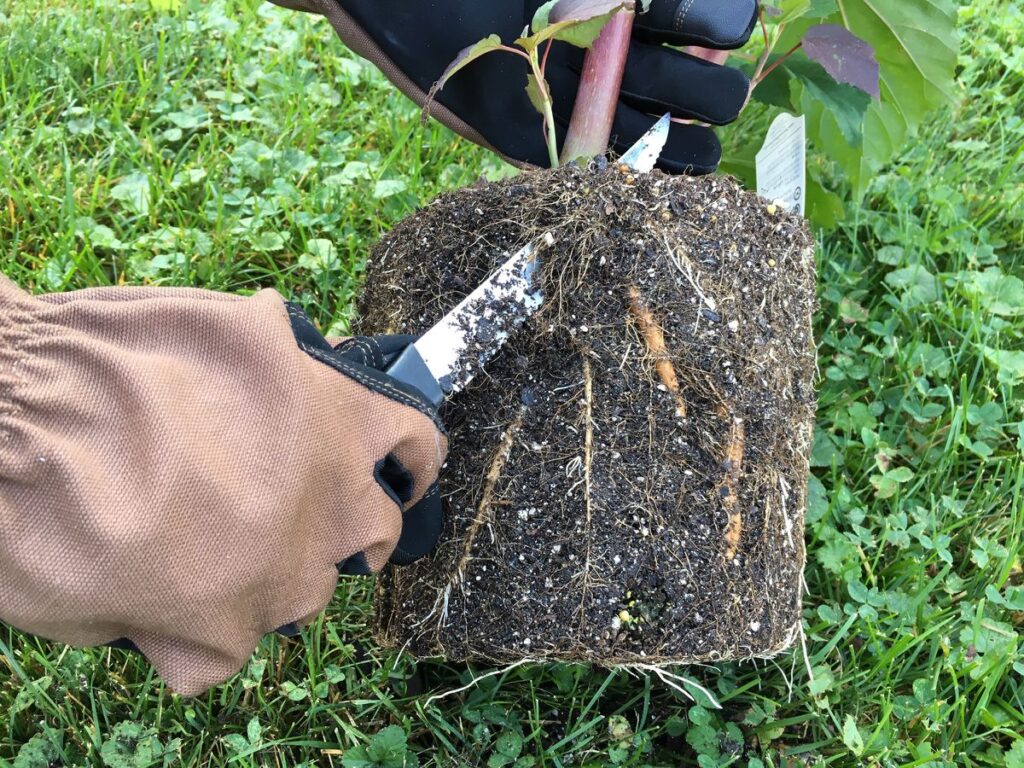
Remove any debris or big rocks from the system to prevent them from damaging the roots and affecting the proper growth of a lemon tree.
4. Mix the soil with fertilizers
Mix the soil with fertilizers such as chicken manure, garden soil, and natural organics, giving the tree nutrients to bear fruits and grow healthy.
5. Replant the tree
You can now place the lemon tree in the new location and then fill it with the same soil, the one already available.
Prune off a few branches which might seem dead or weak to give a lemon tree a fresh new look.
You test the hole’s size by putting the lemon tree’s pot into the new spot to check that you have the right height.
Pull the tree carefully out of the pot, cover well with soil and tamp it down to avoid air pockets formation. Make sure not to reap the tree while transplanting it.
6. Water the plant after transplanting a lemon tree
After putting the root-ball into the soil, make sure to water it deeply to get moist enough and not dry out so fast because it may not survive.
You can water the plant every day for about a week and then reduce the watering to twice a week for the next two months. After the two months, you can water according to how soon the soil gets dry by checking with your finger.
How to Re-pot a lemon tree
Growing lemon trees is easy because you can grow them in a pot. Container lemon tree growing makes gardening flexible since you can have fresh lemons in any environment.
As time moves, a lemon tree outgrows a specific container and requires repotting. If you want a gigantic lemon tree, it’s better to transplant it to a bigger pot.
Let’s find out when doing you to re-pot lemon trees and how to do it;
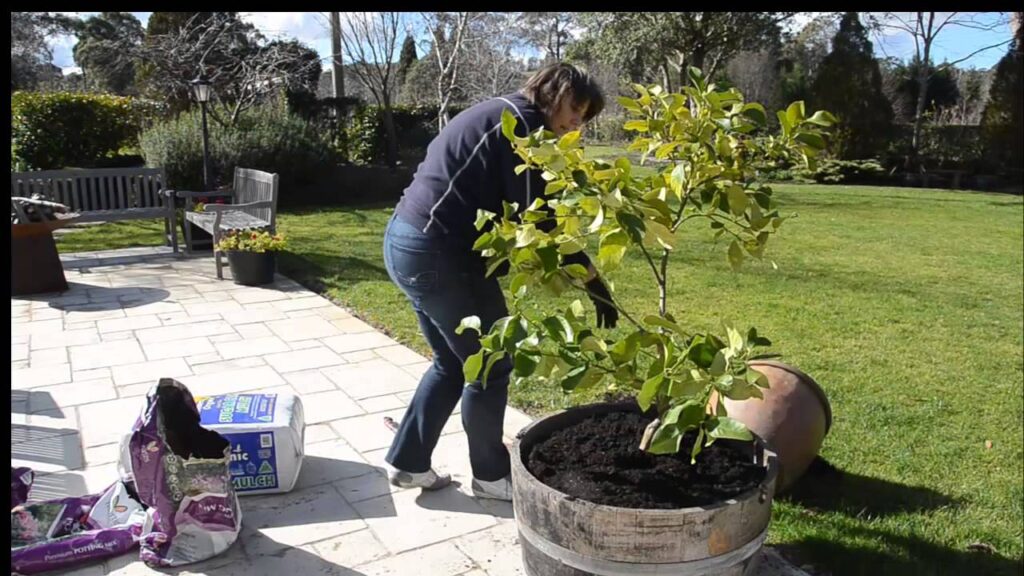
- When roots start growing out of drainage holes, it’s a sign a lemon tree is ready for a re-pot.
- If leaves are drooping and browning even when you water and fertilize a lemon tree appropriately.
- Every 3-4years, you will need to re-pot a lemon tree. You can transplant it to a larger container or merely lift it out for its pot, prune its roots, put fresh soil, and put it back. The ball is in your hands.
- Re-pot a lemon tree in the spring because that’s when your tree is gearing up for new growth. If you repot a lemon tree when it’s in the growth phase, Its establishment will be timely.
How?
Re-potting is somewhat easy. Here are the strides you can take when re-potting a lemon tree:
1. Choose a larger container
When repotting a lemon tree, it’s better to get a pot 25% larger than where the tree is currently.
2. Fill the container with potting soil
Put ¼ with potting soil mixture and water it until the soil is moist and take care of any excess drains from the drainage holes.
3. Loosen the soil around the root ball
Use a trowel to loosen the soil around the root ball and the pot. When the tree feels loose enough from the container, discern the tree near the base and lift the lemon tree out.
4.Check the root system
Ensure the roots are concealing the root ball entirely, and slice through them with a sterile knife. Failure to do so will lead to cramping the root ball as it grows and killing the lemon tree.
5. Let the tree sit in the soil.
Place the tree on top of the turf in the new container while adjusting the ground’s depth to have the root ball sit inches beneath the edge of the pot.
Add more soil around the roots until you see the tree soil is the same as the old one.
6. Water the tree
After putting the lemon tree in a container with potting soil, ensure thorough watering to help the soil settle and moist.
Continue giving the lemon tree proper care, and after a few years, you will get your lemonade ready for consumption.
When to transplant lemon seedlings
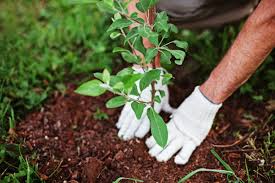
Lemon trees need minimal care while growing, and that makes them an easy fruit tree to grow in your garden at home because they even have a long lifespan.
Lemon trees have a good reaction even towards demanding weather conditions.
Before transplanting the lemon tree seedling, you will plant it until it starts growing taller, then you can transplant it to a bigger pot.
Follow these steps below to grow lemons from seeds:
1. Prepare the seeds
Use fresh seeds when planting lemon trees because dried ones will not be able to germinate properly. You get a lemon, remove its roots, and wash them continuously with clean water to eliminate all the fruit detritus.
If you do not wash the seeds, those natural sugars in the juice will encourage fungal growth hence delaying the germination.
2. Prepare the potting soil.
The next step is to choose where you will plant the lemon seeds and, most preferably, in a container. If you put them directly into the ground, pests might prey upon them.
Mix garden soil with organic compost because it’s essential for lemon tree nutrition. This mixture will help support quick seed germination. You can also sterilize the potting soil mixture to secure it against soil-based infections. Heat it in an oven for about 30minutes.
Add perlite to the mixture of soil, which will help increase the ground’s water draining ability. After this, you can add a minimum amount of water to the surface to make it moist, not wet.
3. Plant the seeds
When you have your pot and the soil mixture ready, fill it with ¾ of the mix, make a depression into the moist soil, and put the seed at least ½ inches deep.
Cover the lemon seeds with the potting mixture and wrap a plastic wrap around the container. You are wrapping on top of the pot to protect the lemon seeds from losing water due to evaporation.
4. Put the pot indoors.
Now carry the container where the seeds are into the house and ensure it is in a warm shaded area. If it’s during the summer, put moist towels around the seed pots.
The towels will help maintain the humidity around the container.
5. Give proper care to the lemon seed plant.
Ensure the surface where you plant the seeds does not get dry, so you need to monitor and water them as frequently as possible. Don’t let the soil get too wet because the seedlings will die.
In about three to five weeks, germination will occur; the new seedlings will grow and develop more vigorous shoots. All of this will happen in about three months.
6. Transplant the lemon tree seedlings
When the seedlings are about 6 inches tall, it’s time to transplant them. Choose a nice spot in your garden with a little shade, but it needs to access sunlight at least 4hours daily.
Use a spade to dig a slightly bigger hole than the pot and place them in the spot. Water the lemon tree at least once a week and practice some occasional pruning.
Can lemons recover transplant shock?
Lemon tree faces transplant shock, and leaves start dropping after you transplant it. But transplant shock does not mean the lemon tree is dying.
Most trees experience transplant shock after moving them from one location to another. Still, when you give the tree proper care, it recovers.
When lemons get a transplant shock, wait patiently because sometimes the plant needs a few days to recover from the shock. Give the tree time and care for it usually, and it will come back on its own.
Here is what you can do to reduce transplant shock;
1. Prune the roots
During transplanting a lemon tree, a tree might lose a significant percentage of its cores, making the tree drop its leaves. The tree does this because it wants to reduce the amount of foliage to put out new roots.
So it would help if you reduced the roots by pruning to help it produce new ones with no strain.
2. Water the new hole
When reducing transplant shock in a lemon tree, you need to avoid leaving the new plant from drying out while it’s still establishing itself in the new location.
However, try not to let the soil become too wet since the citrus hybrids are vulnerable to root rot. While watering a tree transplant, do it slowly while pausing a bit to let the water drain before adding more.
Watering can take place at least twice a week if it’s a dry season, and you can wait to add any fertilizers until the lemon tree begins to make new growth.
3. Keep the lemon tree healthy.
To reduce lemon tree transplant shock, you need to ensure it’s in a proper new sheltered location. Doing this will help it deviate to all-weather conditions, a place with salt-free soils, and it will thrive through.
When the tree is secure and healthy, it will not drop its leaves due to hot temperatures, cold winds, or lack of nutrients.
4. Purchase a small tree
While minimizing transplant shock, you need to move the tree while it’s still small, only about 1 to 3 feet tall, before it has time to become root-bound. So buy a tree which is still young and will not find trouble during the transplant.
While moving the lemon tree from a container, try not to disturb the roots very much and position the root ball about one inch above the surrounding ground hence preventing root rot.
In conclusion, transplanting will be successful if you do it right and to reduce transplant shock. You need to take proper care of the lemon tree during the process of moving it.
Bottom line
Lemon tree growing is easy; you can do it from fresh seeds or buy dwarf lemons. When they grow, they reward you with Lemonades.
Container growing of lemons makes growing lemons flexible for you because you have the opportunity of transplanting it to a larger container when it outgrows the old one.
Re-pot a lemon tree at the right time and follow the steps above; your tree will produce results.
Frequently Asked Questions
The best time to transplant the Meyer lemon tree is in the spring. Dig a more deep hole and set the lemon tree about an inch higher than it was in the container.
Most fruit trees are useful to transplant in the spring before they actively grow or during the cold season when the tree is stagnant.
Lemon trees take three to five years, depending on the type of rootstock. However, if blossoms drop, fruit growing becomes a problem because forming fruits might fall off too before they begin to grow.
